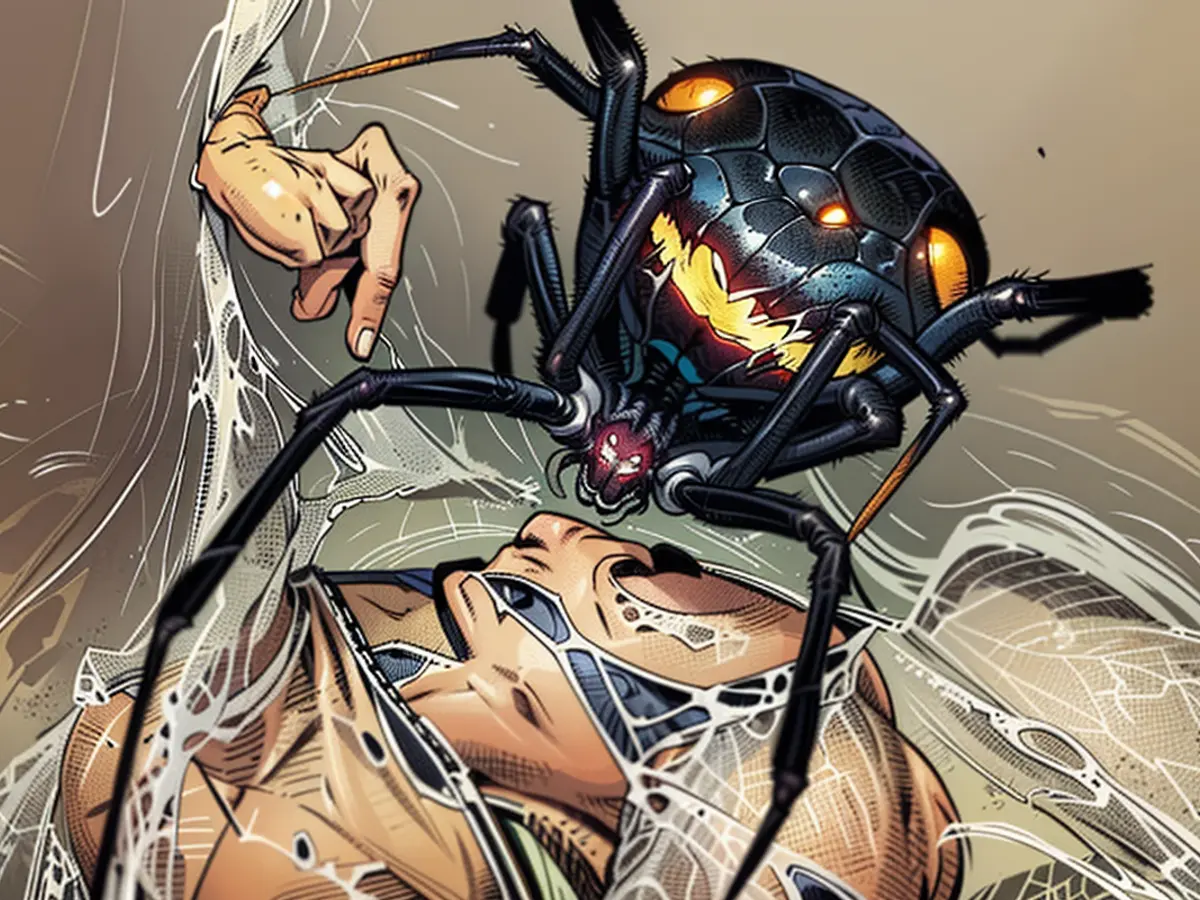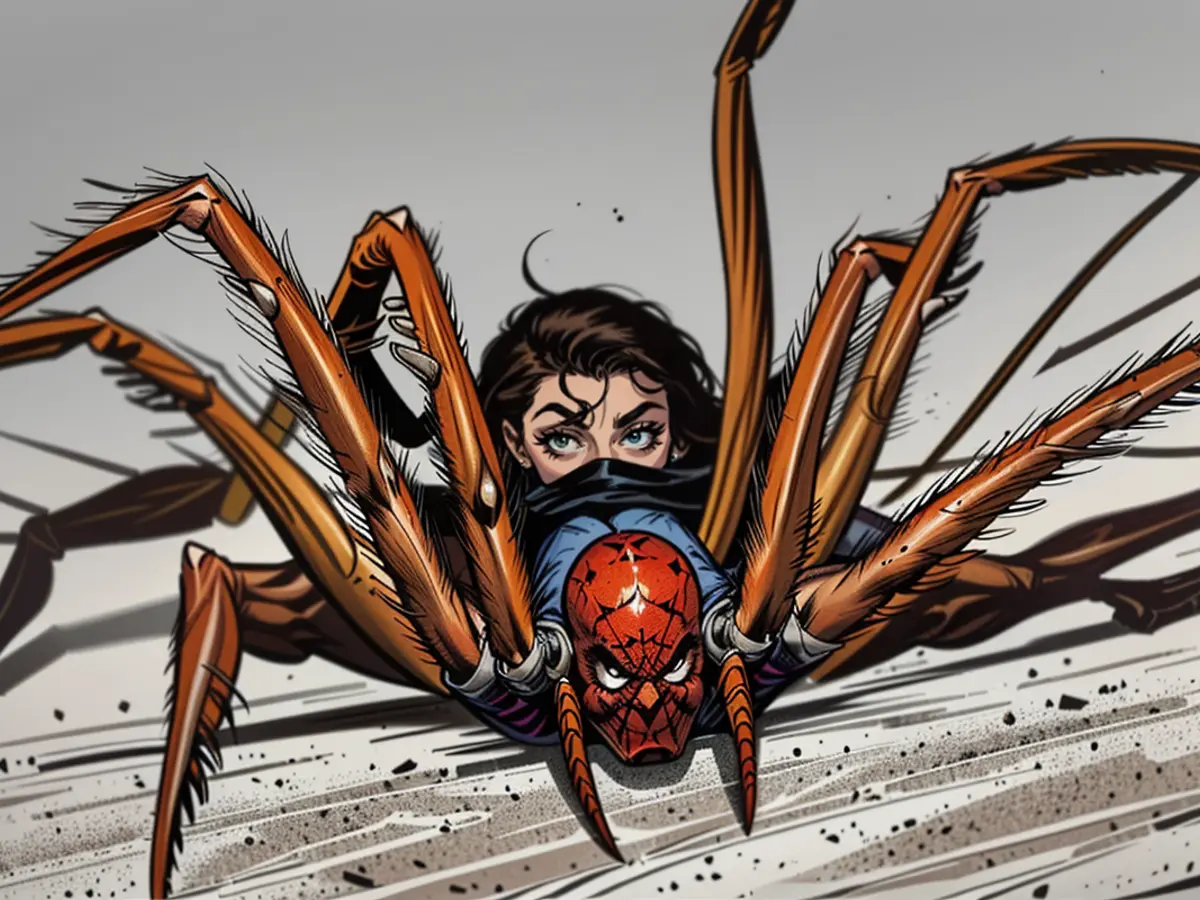Table of Contents
- Identifying the Fiddleback Spider
- Where is the Venomous Fiddleback Spider Found?
- Do Fiddleback Spiders Coexist with Humans?
- How Frequent are Fiddleback Spider Bites?
- Identifying a Fiddleback Spider Bite
- How Potent is the Venom of the Brown Fiddleback Spider?
- Treatment for a Fiddleback Spider Bite Wound
- Following a lethal bite, what level of peril does the brown violin spider pose?
The dangerous spider population is on the rise. There are currently over eight deadly spider species that could harm humans living in Germany. A bite from an incorrect species can lead to serious complications such as paralysis, amputation, and even death. Recently, it's the Vampire spider, introduced from the Mediterranean region, that has caused concern.
Recently, there's been growing worry about the spread of the Brown Fiddleback Spider. In mid-July, a 52-year-old man passed away in Sicily several days after getting bitten by the venomous spider. In mid-August, another death was reported. A 23-year-old man from Apulia passed away a month later due to septic shock and organ failure. Italy has been concerned about the spread of the animal for some time, as has Spain. Reports of bites have also been made in those countries, including popular holiday islands like Mallorca and Ibiza.
Here's all the information you need to know about the spider and how to protect yourself on your next holiday. A summary.
Identifying the Fiddleback Spider
The poisonous Brown Fiddleback Spider or Loxosceles rufescens is a type of reclusive spider. It has a relatively small body length of 7 to 9 millimeters. Its eyes are not eight, but six, and it is classified as one of the six-eyed sand spiders. The eyes reflect light. The Brown Fiddleback Spider has a yellowish-brown color and a distinctive pattern on its body resembling a violin.
Where is the Venomous Spider Found?
Being the only one of the Loxosceles species, the Fiddleback Spider is found in Europe. It is primarily found in the Mediterranean region but is now widespread worldwide - including in North America and Southeast Asia. Italy has been concerned about the spread of the venomous spider for some time. It is also becoming more common in the Netherlands, Spain, Switzerland, and the Czech Republic. Researchers at the University of the Balearic Islands predict that the spider will continue to spread in Europe and warn against it. The online portal araneae - Spiders of Europe provides information on the distribution of the Fiddleback Spider.
Do Fiddleback Spiders Coexist with Humans?
As stated in the reference book "Spiders - Everything You Need to Know", "Loxosceles species have a certain preference for buildings, however, they lead a very secretive life, rarely seen, and bites are very rare." So, these venomous spiders are nocturnal and hide during the day in attics and garages, primarily in cracks and crevices. The Brown Fiddleback Spider can survive for up to four and a half months without food and water and is less common in rural areas.
How Frequent are Fiddleback Spider Bites?
So far, they are quite rare. Besides the two fatal bites in Italy, only a few other instances are known. Between 2022 and 2023, four cases of Fiddleback Spider bites were reported by zoologists from the University of the Balearic Islands in a study. One of them occurred on the popular holiday island of Mallorca, with further cases in Catalonia and the Basque Country. No cases have been reported in Germany yet.
Identifying a Fiddleback Spider Bite
Frequently, a bite from the Fiddleback Spider goes unnoticed at first. A blister forms at the site, which is red, painful, itchy, and can become a wound. This often leads to necrosis, or death of the skin, as noted on the expert site "Lifeline". In severe cases, large areas of tissue can be damaged down to the muscle, which can be life-threatening.
How Potent is the Venom of the Brown Fiddleback Spider?
The bite of the Fiddleback Spider is initially harmless and, if noticed at all, is described as a slight sting. Symptoms usually only appear hours later. A woman who was bitten behind the ear on Mallorca in 2022 had to be treated for pain, fever, dizziness, and numbness in her arms and legs. It took about two weeks for her to fully recover.
The venom of the Fiddleback Spider contains sphingomyelinase D, which can cause skin necrosis in severe cases. These must be treated medically urgently. As early as 2021, a tourist on Ibiza had to have two fingers amputated after being bitten by a Fiddleback Spider.
Treatment for a Fiddleback Spider Bite Wound
The wound should be cleaned and the area cooled. People who have been bitten should seek medical help immediately so that the wound can be treated professionally, such as with cortisone and antihistamines. "In most cases, the bites heal well and only leave a small scar," say the "Lifeline" experts.
In the context of preventing spider bites during travel, it's important to be aware of the habitats of harmful spiders. The Brown Fiddleback Spider, for instance, is often found in cracks and crevices in buildings, such as attics and garages. These spiders are of a relatively small size, with a body length of 7 to 9 millimeters, and have a distinct violin-like pattern on their bodies. Moreover, to safeguard against potential bites, it's crucial to inspect and maintain the area around your accommodation, particularly if it has any narrow spaces that could potentially house these reclusive spiders, which have a body width of less than 30 cm.









